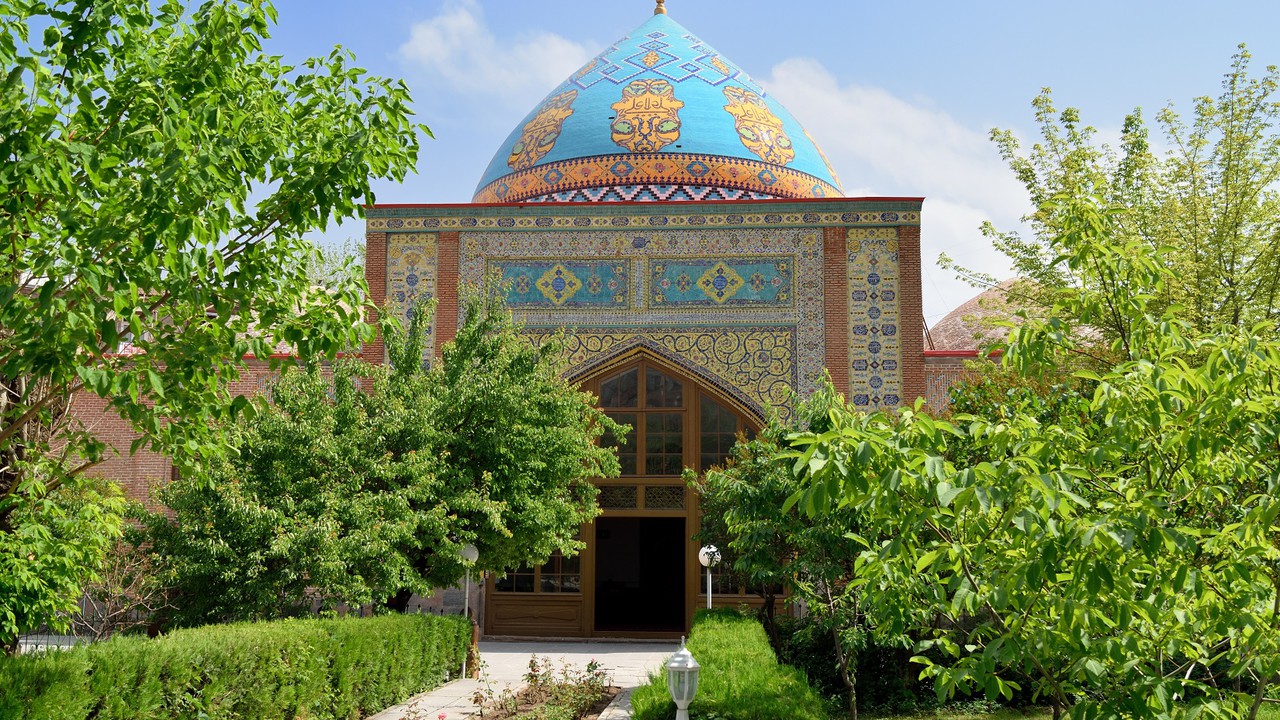2025
2025
2024-04-19

Armenia isn't the sole target of Azerbaijan's territorial, historical, and cultural ambitions. Baku persistently appropriates not only Armenian but also Iranian material and non-material heritage, endeavoring to construct an identity, fabricate national history, and consequently assert further "justified" claims to its neighbors. This dynamic fuels tensions and political discord between Iran and Azerbaijan.
Baku seeks to Azerbaijanize Iran's historical and literary figures along with its cultural treasures, encompassing representatives of the Safavid dynasty, the poet Nizami Ganjavi, the game of polo, Iranian carpets, the art of miniature painting, and other elements of cultural heritage.
Even the Iranian Blue Mosque in Yerevan falls victim to Azerbaijan's policy of "Azerbaijanization". Here, the problem is equally related to both Iran and Armenia, because with the presence of this mosque in Yerevan, Baku is trying to substantiate the thesis that Yerevan is "Azerbaijani", a thesis Azerbaijan had been advancing before 2020. The 44-day Artsakh war and subsequent propaganda activities have propelled this false narrative under the guise of thesis of "Western Azerbaijan".
A vivid example emerged in 2022 when Azeri MPs Soltan Mammadov and Tahir Mirkishili, attending the "Euronest" Parliamentary Assembly in Yerevan, visited the Blue Mosque and hailed it as "the only Azerbaijani monument preserved in Yerevan". Mirkishili wrote on his Facebook page: "We visited the Blue Mosque. As far as we know, this is the only preserved Azerbaijani monument in Yerevan. Although there are inscriptions on the walls belonging to other countries, the walls, architecture, and spirit belong only to us. We believe that one day the real owners of this mosque will be able to raise their prayers. The prayers of Azerbaijanis are good and, in the end, they come true."
The Iranian Embassy in Armenia promptly responded to the Azerbaijani deputy's statement on Twitter, emphasizing Azerbaijan's tendency to claim non-Azerbaijani structures as its own։ "The Blue Mosque, a symbol of Iranian art, has been active again in the last 3 decades as the praying and congregation place of Muslims residing in Armenia and a touristic attraction. A great pleasure that its centuries-old Persian epigraphy has been preserved! Who can read them?",- wrote the Iranian Embassy.
Indeed, Azerbaijan, as per its custom, often asserts ownership over non-Azerbaijani structures. The mosque, with its entirety of features, including inscriptions, stands as an Iranian architectural monument preserved due to the efforts of Armenians.
It's worth noting that the Blue Mosque, approximately 260 years old, was constructed between 1765 and 1768 during the reign of Hussein Ali Khan under the Iranian Zend dynasty, when Eastern Armenia was under Iranian rule. The mosque operated until the Soviet era, facing the threat of demolition due to the anti-religious policies of Soviet authorities. Armenian intellectuals, notably Yeghishe Charents, saved it from destruction. Incidentally, Iranians hold Charents' contributions in high regard and frequently arrange events commemorating the poet's legacy within the mosque.
Subsequently, the Yerevan History Museum was housed in the mosque. After Armenia gained independence, in agreement with Iran, the mosque underwent renovation, reopening in 1996, and continued to serve its purpose. Further renovations took place in 2009-2011.
The mosque's Iranian architectural style and inscriptions in Persian and Arabic serve as its "passport" and indicators of its origin. Arabic quotes found within the mosque are excerpts from the Quran. Additionally, one of the mihrabs and the porch of the mosque bear Persian inscriptions detailing its construction and renovation, including the names of the builders and the client. Moreover, several memorials adorning the walls of the mosque are also inscribed in Persian.
Despite the presence of facts, the Azerbaijani side continues to present the mosque as Azerbaijani. Conversely, Iranians, in collaboration with Armenians, organize spiritual and cultural events in the mosque, promoting a narrative of cooperation and cultural exchange.
Today, the Blue Mosque serves as a spiritual gathering place not only for Iranians but also for foreign tourists visiting Armenia, embodying a cultural dialogue between Armenia and Iran and reflecting Armenia's and the Armenian people's inclusive attitude towards other religions.